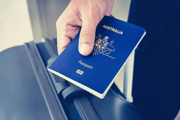Economists say Australia’s in recovery—has your wallet caught up yet?
By
Maan
- Replies 0
Australians may finally be stepping out of survival mode.
After years of stretching every dollar, households are starting to show signs of spending again.
Yet economists cautioned that the recovery remained uneven across the country.
For months, the cost-of-living crisis had weighed heavily on families, leaving many households effectively going backwards.
Fresh figures revealed that mortgage holders and renters alike were starting to get ahead on their budgets, opening the door for more spending.
Rate relief and tax cuts introduced in July last year were beginning to filter through, with three of the nation’s big four banks declaring the worst was now behind Australians.
Commonwealth Bank chief economist Belinda Allen said while the recovery had been slower than expected, the signs of change were there.
‘A recovery is gaining real traction,’ she said.
‘As income and wealth improve, and in the context of a strong labour market and falling interest rates, we expect a more pronounced recovery in consumer spending soon.’
The near $300 billion bank forecast household consumption to lift to 2.4 per cent by the second half of 2026, a potential turning point for an economy that had struggled to keep pace with global peers.
The Australian Bureau of Statistics reported household spending rose just 0.4 per cent in the March quarter, following a revised 0.7 per cent lift in December, while overall GDP grew a mere 0.2 per cent.
Since household consumption made up roughly half of GDP, any shift carried major weight for national growth.
ANZ research suggested GDP would strengthen in the coming quarters, pointing to stronger household spending as the driver.
‘A lift in overall public demand, along with an acceleration in consumer spending, will likely drive GDP growth in Q2,’ ANZ said.
‘The monthly household spending indicator grew 0.7 per cent quarter on quarter in real terms in Q2, which is slightly stronger than our underlying household consumption forecast.’
Westpac’s head of Australian macro-forecasting Matthew Hassan noted that the bank’s own transaction data was also showing positive momentum.
‘Easing cost of living looks to be a factor, especially for renters, while lowering tariff related concerns might have also lifted sentiment,’ he said.
Mr Hassan, however, was cautious about declaring a full recovery, saying sales at retailers were still sluggish and often dependent on heavy discounting.
‘Whether we see this latest lift in sentiment flow through to more spending will be a key guide to seeing if the consumer recovery is gaining traction,’ he said.
Looking ahead, all three major banks expected further interest rate cuts in November to bolster consumer activity, with the possibility of at least one more cut in 2026.
‘We have flagged the risk of further easing next year, but it is not our base case,’ Ms Allen said.
‘A stronger near-term response from the consumer is a key reason for this call.’
CBA warned that stronger spending could allow businesses to pass through some of their cost pressures, keeping inflation in play.
‘If we don’t see the response we are expecting, or alternatively if the labour market deteriorates, further rate cuts are possible next year,’ she said.
‘At this stage though, all signs are pointing towards an improvement in consumer spending, finally.’
It’s one thing to hear that the economy may be turning a corner, but it’s another to make sure personal finances are moving in the right direction too.
When household budgets begin to ease, the next challenge is making smart decisions that protect long-term stability.
That’s why stories about avoiding common money mistakes are worth a closer look.
Read more: ‘No second chances’: Avoiding retirement money mistakes you can’t undo

If the tide really is turning, will Australians embrace spending again—or stay cautious after years of financial strain?
After years of stretching every dollar, households are starting to show signs of spending again.
Yet economists cautioned that the recovery remained uneven across the country.
For months, the cost-of-living crisis had weighed heavily on families, leaving many households effectively going backwards.
Fresh figures revealed that mortgage holders and renters alike were starting to get ahead on their budgets, opening the door for more spending.
Rate relief and tax cuts introduced in July last year were beginning to filter through, with three of the nation’s big four banks declaring the worst was now behind Australians.
Commonwealth Bank chief economist Belinda Allen said while the recovery had been slower than expected, the signs of change were there.
‘A recovery is gaining real traction,’ she said.
‘As income and wealth improve, and in the context of a strong labour market and falling interest rates, we expect a more pronounced recovery in consumer spending soon.’
The near $300 billion bank forecast household consumption to lift to 2.4 per cent by the second half of 2026, a potential turning point for an economy that had struggled to keep pace with global peers.
The Australian Bureau of Statistics reported household spending rose just 0.4 per cent in the March quarter, following a revised 0.7 per cent lift in December, while overall GDP grew a mere 0.2 per cent.
Since household consumption made up roughly half of GDP, any shift carried major weight for national growth.
ANZ research suggested GDP would strengthen in the coming quarters, pointing to stronger household spending as the driver.
‘A lift in overall public demand, along with an acceleration in consumer spending, will likely drive GDP growth in Q2,’ ANZ said.
‘The monthly household spending indicator grew 0.7 per cent quarter on quarter in real terms in Q2, which is slightly stronger than our underlying household consumption forecast.’
Westpac’s head of Australian macro-forecasting Matthew Hassan noted that the bank’s own transaction data was also showing positive momentum.
‘Easing cost of living looks to be a factor, especially for renters, while lowering tariff related concerns might have also lifted sentiment,’ he said.
Mr Hassan, however, was cautious about declaring a full recovery, saying sales at retailers were still sluggish and often dependent on heavy discounting.
‘Whether we see this latest lift in sentiment flow through to more spending will be a key guide to seeing if the consumer recovery is gaining traction,’ he said.
Looking ahead, all three major banks expected further interest rate cuts in November to bolster consumer activity, with the possibility of at least one more cut in 2026.
‘We have flagged the risk of further easing next year, but it is not our base case,’ Ms Allen said.
‘A stronger near-term response from the consumer is a key reason for this call.’
CBA warned that stronger spending could allow businesses to pass through some of their cost pressures, keeping inflation in play.
‘If we don’t see the response we are expecting, or alternatively if the labour market deteriorates, further rate cuts are possible next year,’ she said.
‘At this stage though, all signs are pointing towards an improvement in consumer spending, finally.’
It’s one thing to hear that the economy may be turning a corner, but it’s another to make sure personal finances are moving in the right direction too.
When household budgets begin to ease, the next challenge is making smart decisions that protect long-term stability.
That’s why stories about avoiding common money mistakes are worth a closer look.
Read more: ‘No second chances’: Avoiding retirement money mistakes you can’t undo
Key Takeaways
- Household budgets gained breathing room thanks to tax cuts and lower rates.
- CBA forecast consumption growth of 2.4 per cent by late 2026.
- ABS figures showed household spending growth remained subdued in early 2025.
- Banks tipped further interest rate cuts to keep momentum alive.
If the tide really is turning, will Australians embrace spending again—or stay cautious after years of financial strain?








